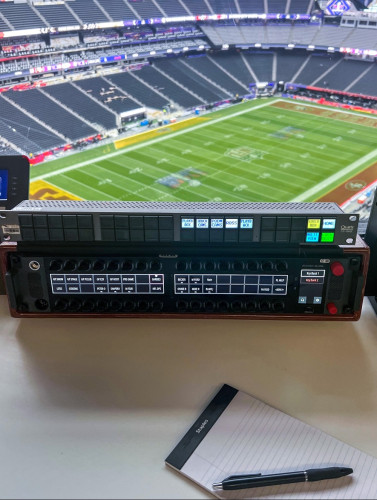With Christine Jecko, Director of Value Added Solutions at GLOBECAST
What are the OTT market trends and evolutions?
Over The Top (OTT) video revenue is set to double to $15.1 billion in 2016, up from $7.8 billion in 2012. The number of connectable devices, both mobile and in the home, is growing rapidly; in fact, according to Idate, the installed base of connectable TV devices (TVs, smart phones, and tablets) will more than triple by 2016 with more than 4.4 billion devices (up from 1.4 billion in 2012).
The OTT market therefore represents tremendous potential as well as complexity for broadcasters but it is also quite challenging. We see the challenges of implementing OTT services centering around the following key areas:
The business model. Broadcasters must find new ways to monetize their content, and strategies will differ from service to service; e.g. pay TV vs. free TV channels.
The devices. As the number of devices grows, so does the complexity of providing good video quality to each. The challenges apply to both mobile devices and the connected TV environment.
The backend. Content management for OTT services, particularly for catchup TV and VOD, is complex and requires processes that can be easily integrated with traditional TV content management workflows.
The front end. Applications and security are vital to the success of an OTT service.
The CDN. Broadcasters must cope with complexities in the CDN environment including a variety of actors, opacity of pricing, and quality of experience which can be very different depending on regions or even vary in a single region from one ISP to another.
What are the advantages of OTT services for Broadcasters?
OTT is mainly seen as a complementary strategy to traditional broadcast services, but in some regions broadcasters are viewing it as an alternative strategy. OTT services play a key role in reducing churn by providing multiscreen services that add value to existing offers. OTT also offers powerful revenue potential from advertising, pay models, and new opportunities to monetize content. In addition, the OTT model offers improved efficiency and better targeting of services and therefore better knowledge of viewers, and it is a powerful mechanism for increasing audience loyalty because it offers better controls on the viewer experience.
What regions of the world have seen the highest level of activity in OTT and why is this?
The U.S. has pioneered OTT services, followed by Western Europe. This is primarily due to the reliability of fixed and mobile networks in these regions, as well as widespread availability of connectable TV devices and increased video consumption on these devices. In addition, content owners and broadcasters here are aggressively adopting multi-platform strategies.
We’re now beginning to see momentum for OTT in the Middle East, Asia Pacific, South America, and Africa as mobile networks in those areas continue to mature and devices become more widely available.
Why Broadcasters would rely on a managed solution for part or all of their OTT services?
A managed service offers OTT acceleration, enabling broadcasters to bring new products and innovative features to market faster with flexibility and agility in implementation. In addition, broadcasters can launch services more quickly in new geographic areas and implement new business models faster and easier.
There are no capital expenditures with a managed service and operating expenses are more easily controlled. Plus, a service provider infrastructure offers economies of scale and flexibility. And, since clients are gaining access to best-of-breed technologies and the top CDNs in their region, it’s much easier to cope with ongoing supplier and technology evolutions. Also, by aggregating clients’ content, a service provider is able to provide greater cost-effectiveness on the CDN – again, it’s economies of scale.
Above all, a managed service better positions a media operation to cope more effectively with the complexities of OTT as we described earlier.
What is GlobeCast’s offer as far as managed OTT services are concerned?
GlobeCast has a long-term reputation for expertise as a global managed service provider. We are a reliable and trusted provider of services for satellite content ingestion, integration, and delivery, with many years of experience in broadcasting services and operations around the world.
GlobeCast has developed end-to-end as well as modular OTT solutions that are now in use worldwide. Our end-to-end OTT offering includes encoder and server infrastructure, operations expertise, multiple CDN agreements, and reporting capabilities. We operate teleports in conjunction with media centers in Paris, London, Miami, Culver City, Singapore and Hong Kong. We also offer solutions for live video content and preparation of catchup and VOD content, with modular features including encoding, packaging, origin server, multiple CDNs, statistics, analytics, advertising, and applications.
GlobeCast offers its OTT services both in complement to traditional broadcast delivery, as well as an alternative solution depending on the region and content strategy of the broadcasters. With the fast-moving video OTT market presenting more and more challenges for broadcasters, GlobeCast is well positioned to meet their needs going forward through global OTT managed services.









































